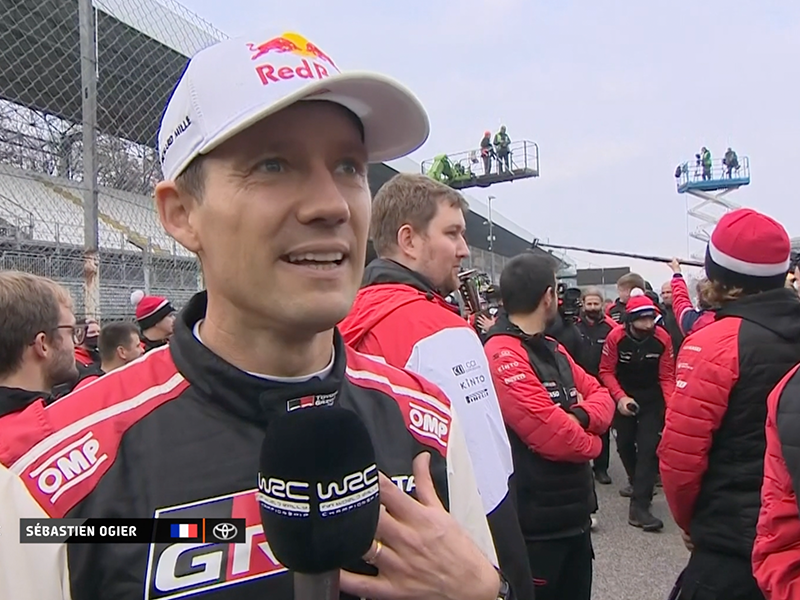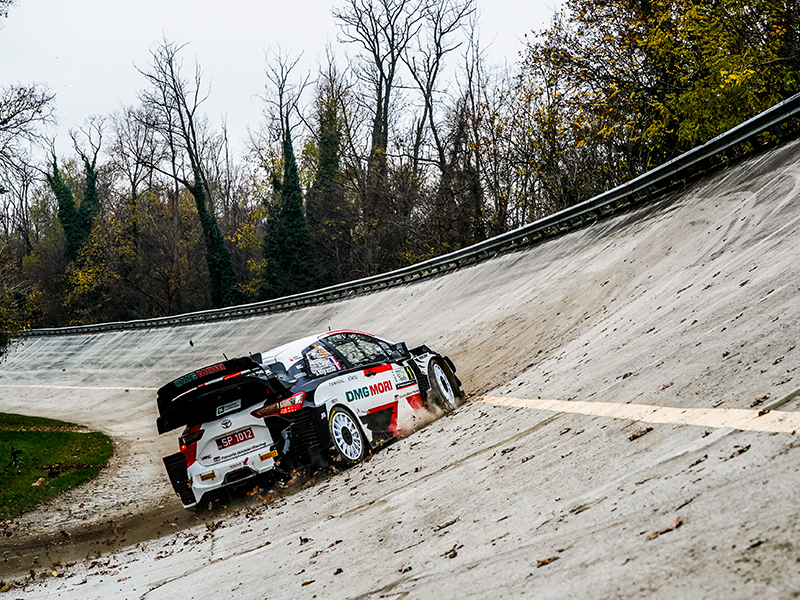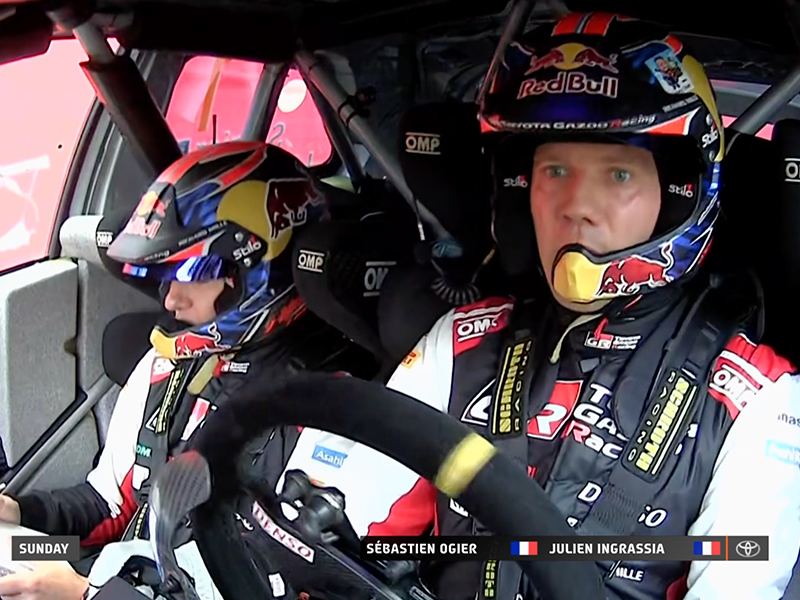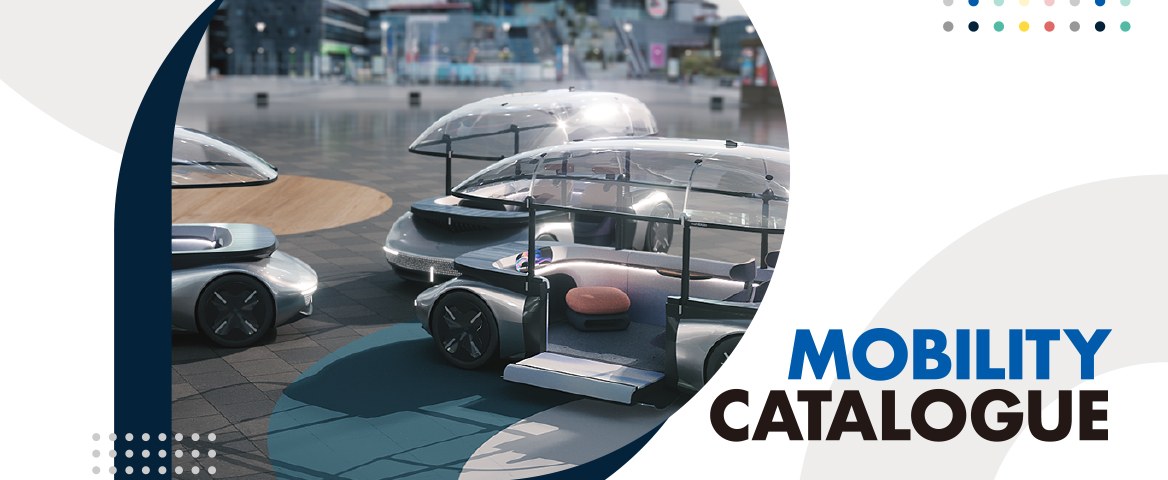The WRC and Italy
Italy has a long relationship with the WRC (World Rally Championship). Since San Remo Rally became part of WRC’s inaugural calendar in 1973, Italy has already hosted a round of the WRC 38 times. San Remo, a Mediterranean city renowned for its famous Music Festival, has seen so many great battles over the years. The location was switched to Sardinia in 2004 and held on the island since then. In 2021, the event was run on June 3-6 over four days and Sébastien Ogier, driving a Toyota Yaris WRC, claimed his third victory of the season.

The 2021 WRC season seemed to be sailing smoothly, but the pandemic still cast a shadow on the Championship. The organisers of Rally Japan were disappointed to announce the cancellation of their event for the second consecutive year. Rally Monza was held as an alternative round to Rally Japan. Monza is known as a famous F1 circuit, and this year again, the event’s format combined the circuit track with the mountain stages of the Italian Alps. Two rounds of the WRC held during the same season in Italy prove the long-standing relationship between the WRC and Italy, where you find many passionate fans of the sport.
2021 Rally Monza
Let us start by the result – this year’s Rally Monza was won by Sébastien Ogier/Julien Ingrassia driving a Toyota Yaris WRC, just like in 2020. It was their last event together as in 2021, Ogier ends his final full-time WRC season, and it was Ingrassia’s last event before his retirement. At this significant milestone, the crew achieved this great accomplishment. They not only managed to win the event, but that win also secured the Championship titles. It was the eighth title for Ogier and Ingrassia, following Sébastien Loeb’s record of nine WRC Drivers’ title. On the final day, as he finished the last stage, Ogier said, “emotions came like a firework crossing the final line”.

Rally Monza is a unique event. Using the mountainous stages of the Italian Alps and the Monza Circuit tracks and service roads, the crews also drive the banking that is not normally used in races. The drivers enjoyed the newness and the fun of those stages. Rally Monza was held on November 19-21 for three days. The first day saw the crews driving through seven special stages (105.41km/65.5miles), mainly in the mountains near Lake Como. On the second day, the course consisted of six stages (108.24km/67.25miles), including one of 22.11km/12,7miles with an elevation difference of 1,340m/4,400ft and also a run at the Monza Circuit banking. The final day saw the running of three stages (40.16km/25miles), including the Power Stage. The total competitive stage distance was 253.81km/157.7miles.

The event saw an incredible fight between Toyota’s Ogier and Elfyn Evans. By the end of Day 1, Evans led the rally overnight, just 1.4 seconds ahead of teammate Ogier. Day 2 saw the fiercest battle when they swapped the rally lead after each stage. On SS14, Ogier, who was pressured by Evans, closely missed the Chicane barrier but survived. Ogier overturned the position and ended the day with a lead of 0.5 seconds over his teammate.
On the final Day3, Evans could not fill the gap between himself and Ogier and the difference was extended to 7.3 seconds by the end of the rally. This is win number 54 for Ogier/Ingrassia, their fifth of the season with 230 points. They claimed their eighth title in style and achieved to win the triple crown with the Drivers’, Co-drivers’, and Manufacturers’ Title (for TOYOTA GAZOO Racing WRT).

Hyundai could not stop Toyota’s outstanding performance. Dani Sordo (Hyundai i20 Coupe WRC) completed the podium in the third position, followed by his teammate and Hyundai’s first driver Thierry Neuville, who won all three stages of the final day. Hyundai’s Oliver Solberg scored a career-best fifth place, Teemu Suninen, who replaced Ott Tänak for this event, finished sixth, and Takamoto Katsuta rounded the top seven after spinning into a barrier on the final day.
Changing Times
As the last round of the 2021 season is now over, the WRC is looking forward to 2022. The long-standing World Rally Cars will be replaced by the new Rally1 cars next year. The previous top tier of the sport will be renamed Rally1 and will be subject to significant technical changes in the regulations. They will be fitted with a hybrid system due to consideration of the global environment. Germany’s Compact Dynamics GmbH will be the sole supplier of the hybrid system. The teams will continue using the 1.6-litre 4-cylinder direct-injection turbocharged engine (GRE or Global Race Engine).
A new 100% sustainable biofuel, provided exclusively by P1 Racing Fuels will be used from 2022. The FIA aims at carbon neutrality in the future of motorsports and intends to use the earth-conscious fuel not only with the WRC but also for Touring Cars. This technological development of the WRC, including the use of biofuel, will greatly contribute to the future development of commercial cars. This is an excellent opportunity for the WRC to prove its worth. Here’s looking forward to the future of the WRC.
 Mobility-related information website
Mobility-related information website





